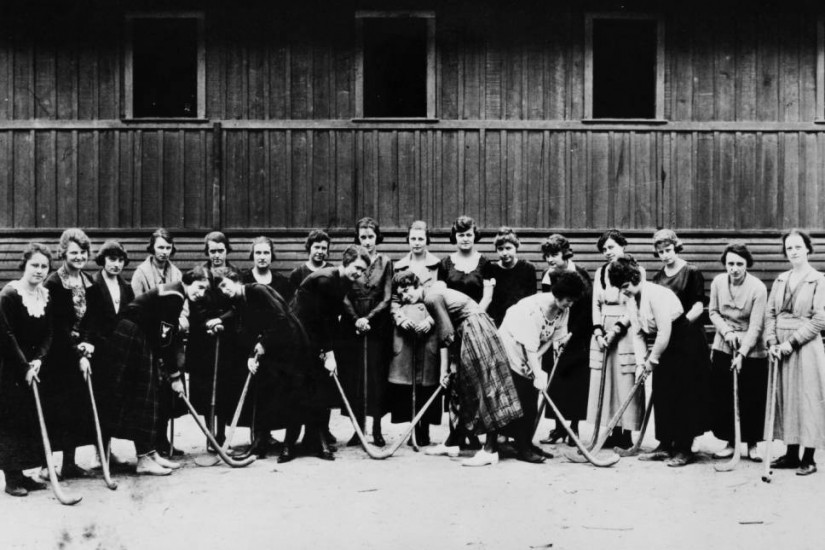Who is that woman?” a man exclaimed to his friends at a California public school “Family Fun Night” in the late 1940s, as he gazed upon physical education teacher Winifred Van Hagen. “She has the strength of a man, the refinement of a lady, and plays like a kid.”
Van Hagen was probably used to it. Women who made a living as gym teachers—combining the “manliness” of a gym-centered life with the grace and maternal energy associated with femininity—were a puzzling sight to some, particularly before women’s professional sports existed. Gym class is now such an entrenched part of American education—and American comedy—that it seems like it’s always been with us. But in her new book, Active Bodies: A History of Women’s Physical Education in Twentieth-Century America, Bucknell University historian Martha H. Verbrugge traces the very specific history of this field, and its relationship to gendered ideas about health, bodily capabilities, and living an “active” life.
Before Woody Allen’s famous line—“Those that can’t do, teach, those that can’t teach, teach gym”—and before lowbrow dodgeball humor, there was the German, English, and American physical culture movement, a late 19th century wave of health mania inspired by a zest for competition and a belief that calisthenics and fresh air were core civilizational pressure valves.
By the early 20th century, physical education emerged as a distinct discipline and a vocation in the U.S., and it drew a varied lot of young men and women. As Verbrugge writes, before 1915, only three states required physical education. By the end of World War I, that number had grown to 28. Just over a decade later, it was 46 states. In addition to its roots in physical culture, the rise in phys ed was part of a broader national push for compulsory education, which included the formalization of attendance policies and curriculum. Exercise programs at public schools grew sharply during the first half of the 20th century, and many of the teachers were young women.
The women who found their way to the nascent field were mostly “white, native-born and middle-class,” according to Verbrugge, and their routes to phys ed were often “indirect or unplanned.” Some were athletes turning their enthusiasm for sport into a profession, others had discovered phys ed through forms of physical therapy after an injury. And still others may have been drawn at least in part by the promise of community. As Verbrugge writes, “A significant number of unmarried teachers were lesbians….Careers in recreation, physical education, and sports not only nurtured lesbians’ professional interests but also opened doors to nontraditional jobs and friendships.” Lesbianism was the field’s “open secret” (and best known stereotype) for decades, but fear of actually being accused of “deviance” was very real.

